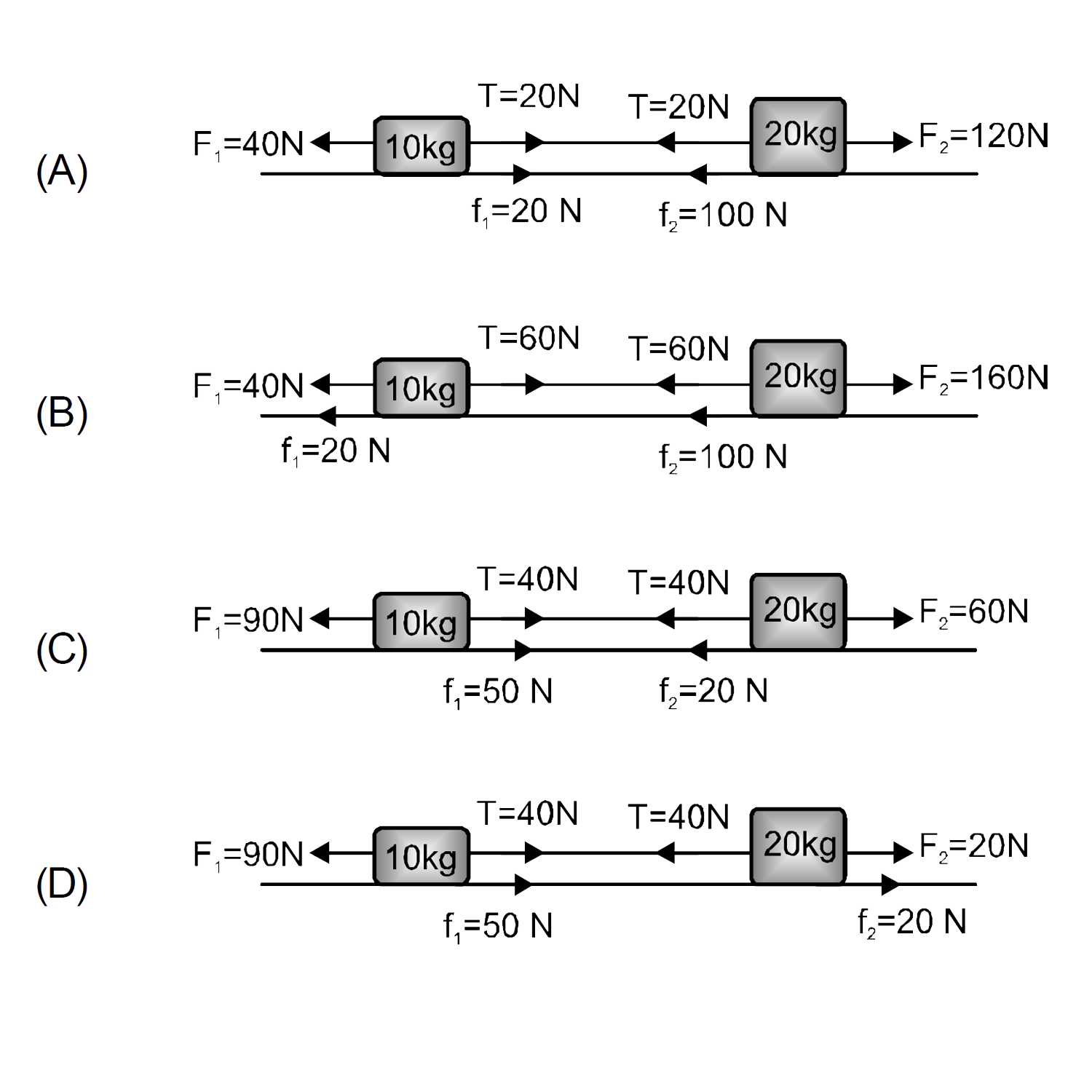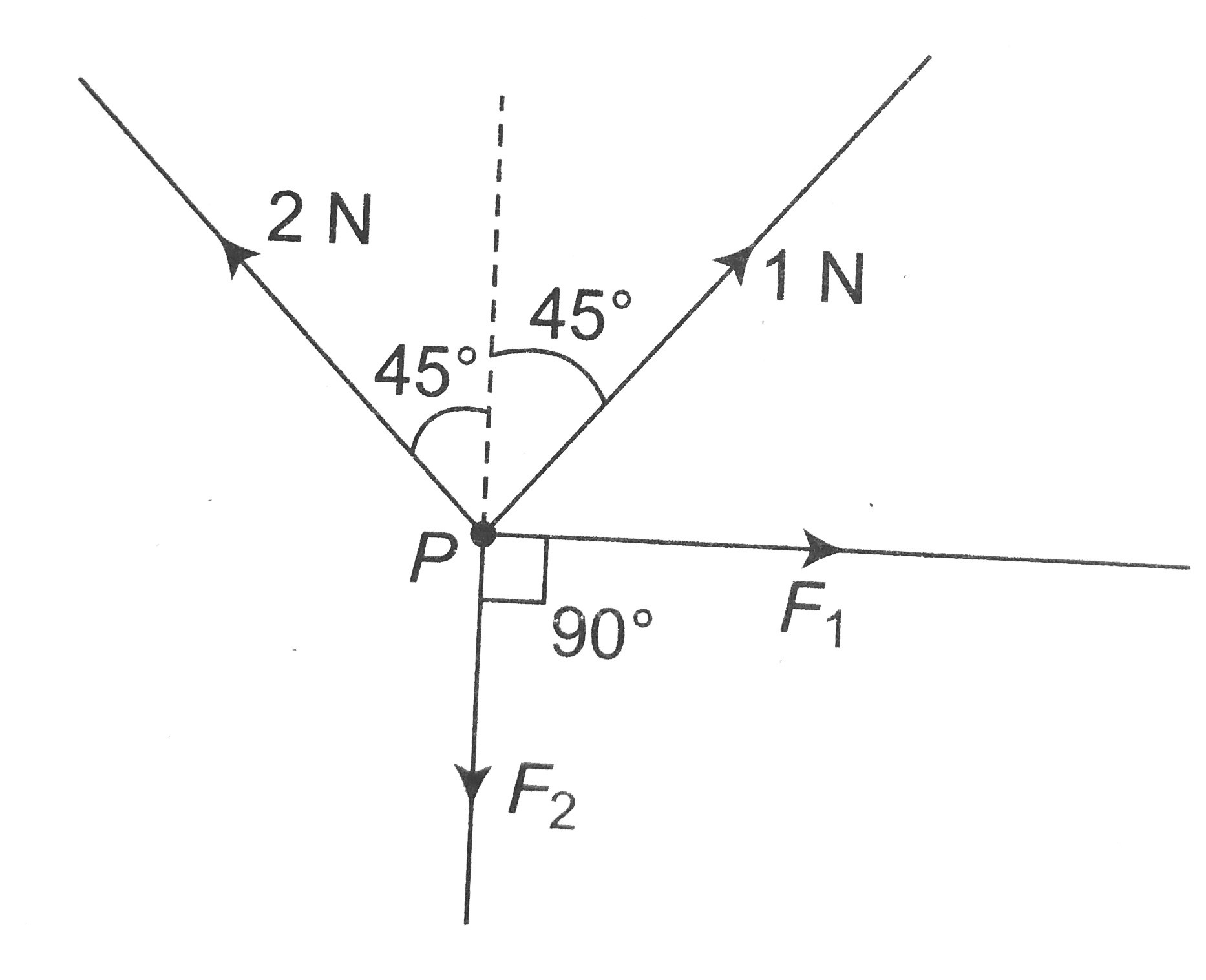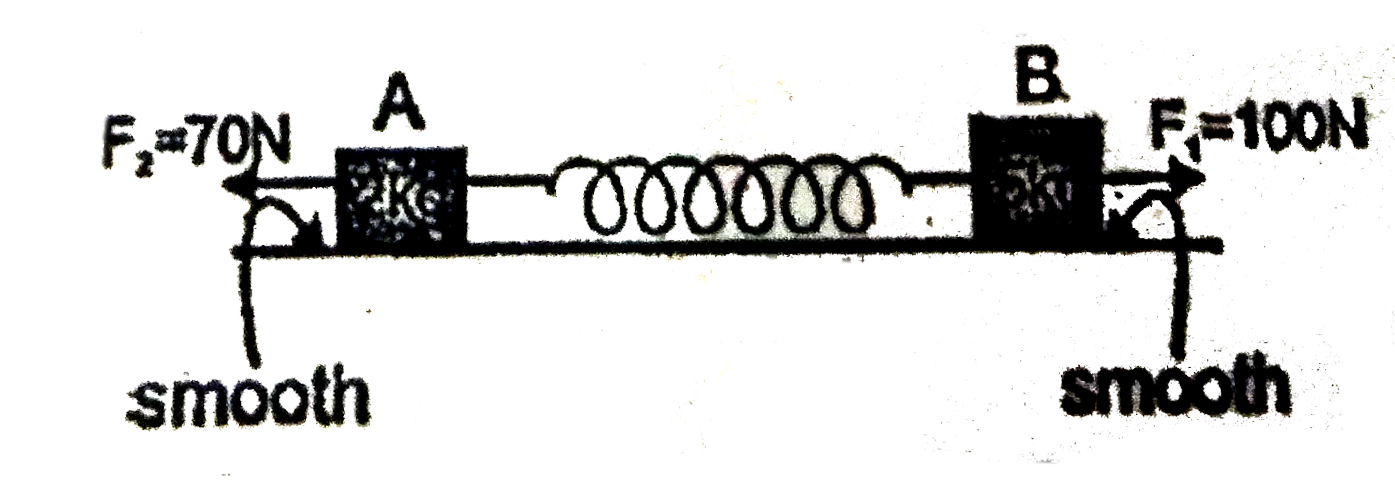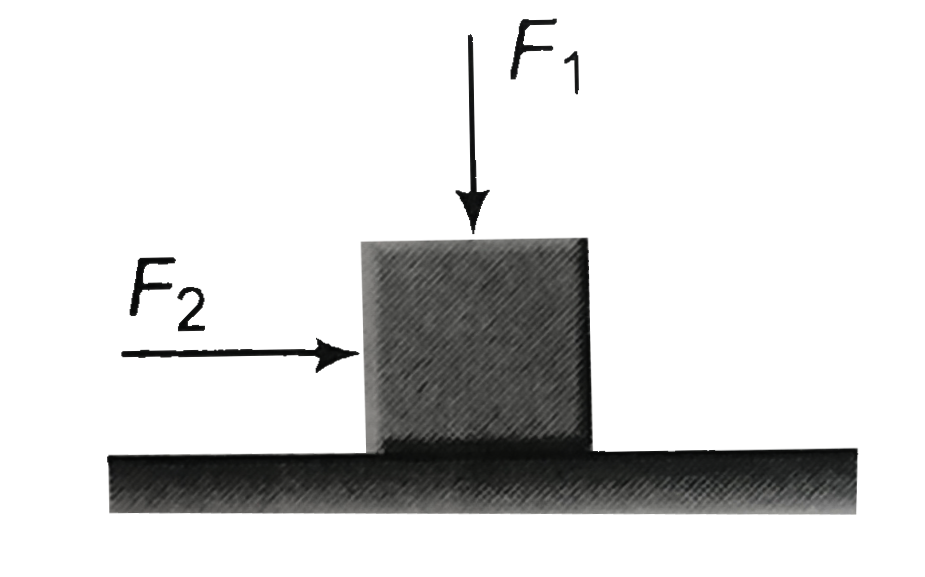Initially both blocks are at rest on a horizontal surface and string is just tight. At t=0, two constant horizontal force F1 and F2 start acting on blocks as shown. f1 and f2 are frication foces acting on 10kg and 20kg block (co-efficient of frication between and ground are 0.5). Values of F1 and F2 are given column-I. Then match magnitudes of f1,f2 and direction of →f1 with corresponding values of F1 and F2 given in column-I
[g=10m/s2].
![Initially both blocks are at rest on a horizontal surface and string is just tight. At t=0, two constant horizontal force F(1) and F(2) start acting on blocks as shown. f(1) and f(2) are frication foces acting on 10 kg and 20 kg block (co-efficient of frication between and ground are 0.5). Values of F(1) and F(2) are given column-I. Then match magnitudes of f(1), f(2) and direction of overset(vec)(f(1)) with corresponding values of F(1) and F(2) given in column-I [g = 10 m//s^(2)].](https://d10lpgp6xz60nq.cloudfront.net/physics_images/RES_DPP_02_E01_040_Q01.png)
Coulmn- ICoulmn- II(A)F2=120N,F1=40N(p)F2=100N,F1=20N
Coulmn- ICoulmn- II(B)F2=160N,F1=40N(q)F2=20N,F1=50N
Coulmn- ICoulmn- II(C)F2=60N,F1=90N(r)F2=70N,F1=50N
Coulmn- ICoulmn- II(D)F2=20N,F1=90N(s)unit vector in direction ¯f1is ˆi(t)unit vector in direction of ¯f1 is −ˆi
∣∣→F1+→F2∣∣<|f1max|+|f2max|
So, both blocks not move in any case
|f1max|=50N,|f2max|=100N

Topper's Solved these Questions
Similar Questions
There are four force acting at a point p produced by strings as shown in figure, which is at rest. The force F1 and F2 are .

View SolutionInitially elongation in spring is 5 cm and blocks are at rest. An external forece F acting on upper block and it varies with times as F=5t Newton force of firction acting on 10 kg block by ground is →f1 and force of friction on 5 kg block by 10 kg block is →f2

View Solution
Knowledge Check
Two constant horizontal force F1 and F2 are acting on blocks A and B. At an instant acceleration of block B is 4m/s2 in direction of F1 and acceleration of block A w.r.t block B at this moment is:
 A1m/s2B2m/s2C7m/s2D9m/s2
A1m/s2B2m/s2C7m/s2D9m/s2There are four force acting at a point p produced by strings as shown in figure, which is at rest. The force F1 and F2 are .
 A1√2N,3√2NB3√2N,1√2NC1√2N,1√2ND3√2N,3√2N
A1√2N,3√2NB3√2N,1√2NC1√2N,1√2ND3√2N,3√2NA block is kept at rest on a rought ground as shown. Two force F1and F2 are acting on it. If we increased either of the two force F1and F2, force of friction acting on the block will increase.
By increasing F1, normal reaction from ground will increase.
 AIf both Accertion and Reason are true and the reason is correct explanation of the Assertion.BIf both Accertion and Reason are true but reason is not the correct explanation of Assertion.CIf Assertion is true, but the Reason is false.DIf Assertion is false but the Reason is true.
AIf both Accertion and Reason are true and the reason is correct explanation of the Assertion.BIf both Accertion and Reason are true but reason is not the correct explanation of Assertion.CIf Assertion is true, but the Reason is false.DIf Assertion is false but the Reason is true.
A block of mass 2 kg is plased on a smooth horizontal surface. Two forces F1=20 N and F2=5 N start acting on the block in opposite directions as shown. If block gets displaced by 5 m in the direction of net force then work done by F2 is :-

View SolutionTwo blocks of mass m1andm2 area placed side by side ona smoth horizontal surface .Two horozontal forces F1andf2 act on m1andm2respectvely .If N is the normal contact force between the block then

View SolutionA block is kept on a rough horizontal surface as shown. Its mass is 2 kg and coefficient of friction between block and surface (μ)=0.5. A horizontal force F is acting on the block. When

View SolutionLet us consider two forces F1 and F2 acting on a body of mass 2 kg as shown in the figure. F1=10N, F2=2N , what will be the acceleration?

View SolutionIn the shown arrangements if f1,f2 and T be the frictional forces on 2 kg block, 3 kg block & tension in the string respectively, then their values are

View Solution